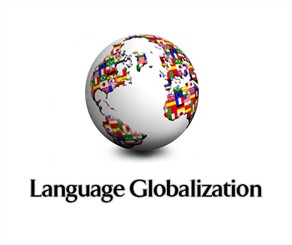Basic Insights into Language Globalization
In the global information processing space, Globalization (G11n) can best be thought of as a process that includes several important and related procedures. To globalize is to plan the design, development, and business elements for a product or content in advance with a multicultural and multilingual audience in mind. The end-goals of Globalization are cost-effective and efficient Localization (L10n), and truly “world ready” products and/or content. Associated benefits of a purposeful Globalization strategy include superior language quality & market acceptance, reduced time to market, the ability to coordinate marketing efforts, and consistent legal/regulatory compliance.
What is Language Globalization?
The primaryprocedures that comprise Globalization are Internationalization (I18n), Localization (L10n), Translation (T9n), and Quality Assurance.

Internationalization (I18n) is the process of developing a program core whose feature design and code do not make assumptions based on a single language or locale and whose source base simplifies the creation of different language editions of a program. Internationalization involves enabling websites or applications to handle different languages, character sets, currencies, submit form data, site search capabilities, etc. It can also entail understanding what database and content management systems you are using to author, store and publish content. Many recent versions of Data Base’s (DB’s) and Content Management Systems (CMS’s) already are “Internationalized” or enabled for other languages.
Localization(L10n) is the process of adapting a program for a specific international market, which includes translating the user interface, resizing dialog boxes, customizing features, and testing results to ensure the program works correctly. For websites, Localization involves translating and localizing the front end of your website into different languages ensuring all content (text and graphics) is translated in an accurate and culturally correct manner.
Translation (T9n) is both the art and science of actually converting a source languageinto a target language. Ideally, all translation projects should be completed by professional native-speakers utilizing linguistic tools to ensure quality, consistency and cost-effectiveness of the work.
A comprehensive, customizable and fully documented Quality Control Process is essential to any sound Globalization effort. QA processes centered upon a series of checklist-based quality audits to ensure functionality and compliance with established quality standards and end-user expectations are best.
Specific examples of Globalization best practices for software products include:
- Locale Implementation – applications must have a locale layer that allows the user to select the locale that should display at any given time.
- Content Externalization – any type of content that might change based on the locale, such as text, images or media, must be externalized from the core application and put into external resource files. When the application is localized, the core application does not need to be modified for each locale, but only the resource files corresponding to those locales.
- User Interface Layout Localization – some languages display text from left-to-right while others (such as Arabic) display text from right-to-left. Also, some languages need more space to express the same message: English to German text translation might expand the number of text characters by 33% or more. A locale-independent application must also accommodate these issues and dynamically modify the user interface (UI) to present text and labels to the user in a clear and well-organized fashion.
- Cultural Considerations – Cultural differences can be subtle. Research and analysis may be necessary to determine the nuances and preferences of the culture or market you’re targeting with your product. The more you integrate cultural elements such as lifestyle, slang, preferences, motivation, values, etc. into a product, the more readily that product will be accepted. This is particularly true as it relates to worldwide product marketing programs. Globalization may include market analysis and establishing multilingual support capabilities.
The Global World and Language Globalization
The different procedures of Globalization are inter-related, complementary, and must be properly combined to lead to the objective of a system that works globally. Globalizationis an important process requiring discovery, analysis, integrating of logistics systems, engineering, communication, and organizational resolve.When executed correctly, Globalization represents a significant competitive advantage that cuts cost, raises quality, minimizes localization time, and increases profitability.
Globalization Partners International (GPI) has years of experience synchronizing the many people, processes and technology associated with developing software, websites and documentation for global markets. We provide comprehensive Globalization consulting services and customized education in areas such as:
- Translation workflows
- Translation tools & technology
- Desktop publishing for multilingual documentation
- Multilingual Web content management systems (WCMS)
- Design, development, and deployment of global softwareand Websites (W3D).
